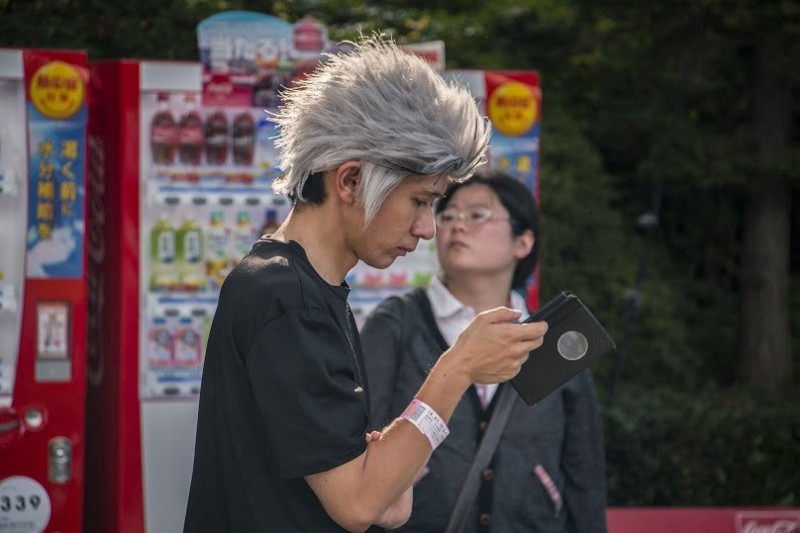When I first came to Japan in the late 1990s, one of the most telling signs of the country’s consumer technology progress versus America, Europe and Australia was its cell-phone network. Not only were Japanese handsets much more advanced than what was available on the GSM and CDMA systems in Western countries, but Japanese carriers had also pioneered business models such as NTT Docomo’s Internet capable i-mode, that went hand-in-hand with advanced hardware.
Fueled by the Japanese appetite for higher levels of functionality, mobile phones evolved more rapidly than overseas, featuring color displays, cameras and electronic payments long before anyone else. Foreign players such as Nokia, Motorola and LG made sporadic attempts to crack the Japanese market, but could not get a serious foothold. RIM’s Blackberry also failed to establish its smartphone in mainstream Japan, remaining confined to the niche market of global corporations using English for internal communication. It seemed that the unique aspects of the Japanese language and user needs were going to keep the “black phones” at bay.
Many attribute this to the “Galapagos Effect” — the way some products developed here in isolation in much the same way animals evolved independently in the islands off the South American coast. Like Galapagos animals, many Japanese products developed unique adaptations not found anywhere else. Japan’s cell-phone industry was one such area.
However, isolated environments such as the Galapagos tend to whither once feral animals, diseases and humans from overseas are introduced — and the same seems to have happened to the Japanese cell phone industry following the launch of Apple’s game-changer: the iPhone.
Fast forward to 2012. Today, Japanese phone makers and carriers — who arguably produced the first “smart” phones — are adapting to a whole new world. Somewhere along the way they lost control of the agenda and are now furiously trying to conform to a new paradigm created by Apple and emulated by Google. Previously coveted handsets have now been relegated to the category of “feature phones.”
At first, many experienced Japan hands felt the iPhone didn’t stand a chance. It was supposed to be too different and lacked features that Japanese users had come to appreciate, such as 1-seg TV and electronic payment capability. How wrong these critics were. Reports late last year quoted a 23 percent penetration rate of smartphones into the 120 million-user Japanese market. It is not a stretch to imagine that these 23 percent are bigger spenders than the rest, so this is really where we now find the game for profits.
A survey last October of 3,300 mobile phone owners by Internet Media Press R&D found that among smartphone users, 60.9 percent were using Google’s Android. Apple’s iOS users were just over 36 percent. The survey also found, not surprisingly, that smartphone use was highest amongst younger people and that two thirds of those who didn’t yet have a smartphone planned to get one.
Perhaps the most important trend is not that local handset makers have lost control of the operating system agenda and have had to adopt foreign formats, but that Android is making such excellent progress in its penetration versus iPhone. Is this a repeat of the Mac versus PC war of the 1980s and 90s?
Google is certainly getting a boost from the collaboration of the Japanese handset makers who have embraced Android, as well as Korea’s Samsung whose Galaxy handsets are widely seen as the greatest threat to Apple. The retail outlets of Japan’s three main carriers now have dedicated sections to smartphones, reflecting the important share of business that these devices now represent. In a development that should light the fire under the domestic handset makers, carriers are now also taking products from Korea and selling it under their own brands.
All in all, it seems that the market has never been so open to competition. Local app developers are certainly doing their part to make the smartphone format relevant and will be a critical part of the mobile eco-system moving forward.
What lessons can be learned from this for American businesses in Japan? Perhaps most importantly is that, contrary to seemingly endless and self-serving assertions on the part of established players, nobody really “owns” the consumer here. The inroads being made by the Koreans mirror those in other consumer electronics categories, and Japanese companies must respond or wither on the vine.
Never has the huge Japanese market been so ready for products and services that genuinely meet needs. In this sense, the ground for the type of iconoclastic consumer innovation that American companies exemplify seems more fertile than ever before.
21st March 2012
CarterJMRN is a strategic market research agency that has been helping clients with consumers and businesses in Japan and beyond since 1989.
We believe that, although the terrain you face in building a successful marketing strategy and activation path sometimes seems obscure, the path to success is knowable and that the consumer is the guide who will show you the way.
Find out more and get in touch on our site
